Are you ready to elevate your pediatric nursing expertise? Dive into our vibrant NCLEX test bank and discover a world of knowledge with our interactive reviewer and over 200 dynamic practice questions. It’s time to test your skills and deepen your understanding in a fun and engaging way. Begin your educational journey in pediatric nursing now!
Pediatric Nursing NCLEX Practice Quiz
Included topics in this practice quiz for pediatric nursing are nursing care management of pediatric clients and common disorders affecting them. It covers pediatric disorders that are cardiovascular, respiratory, gastrointestinal, genitourinary, neurologic, cognitive, endocrine, musculoskeletal, hematologic, and psychiatric. Additionally, you’ll see nursing pharmacology questions (medical administration) for pediatric clients.
Quiz Guidelines
Before you start, here are some examination guidelines and reminders you must read:
- Practice Exams: Engage with our Practice Exams to hone your skills in a supportive, low-pressure environment. These exams provide immediate feedback and explanations, helping you grasp core concepts, identify improvement areas, and build confidence in your knowledge and abilities.
- Challenge Exams: Take our Challenge Exams to test your mastery and readiness under simulated exam conditions. These exams offer a rigorous question set to assess your understanding, prepare you for actual examinations, and benchmark your performance.
- You’re given 2 minutes per item.
- For Challenge Exams, click on the “Start Quiz” button to start the quiz.
- Complete the quiz: Ensure that you answer the entire quiz. Only after you’ve answered every item will the score and rationales be shown.
- Learn from the rationales: After each quiz, click on the “View Questions” button to understand the explanation for each answer.
- Free access: Guess what? Our test banks are 100% FREE. Skip the hassle – no sign-ups or registrations here. A sincere promise from Nurseslabs: we have not and won’t ever request your credit card details or personal info for our practice questions. We’re dedicated to keeping this service accessible and cost-free, especially for our amazing students and nurses. So, take the leap and elevate your career hassle-free!
- Share your thoughts: We’d love your feedback, scores, and questions! Please share them in the comments below.
Quizzes included in this guide are:
Pediatric Nursing Reviewer
To help you refresh your mind about various topics on pediatric nursing, please read the following study guides:
Recommended Resources
Recommended books and resources for your NCLEX success:
Disclosure: Included below are affiliate links from Amazon at no additional cost from you. We may earn a small commission from your purchase. For more information, check out our privacy policy.
Saunders Comprehensive Review for the NCLEX-RN
Saunders Comprehensive Review for the NCLEX-RN Examination is often referred to as the best nursing exam review book ever. More than 5,700 practice questions are available in the text. Detailed test-taking strategies are provided for each question, with hints for analyzing and uncovering the correct answer option.
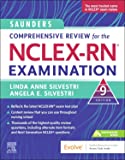
Strategies for Student Success on the Next Generation NCLEX® (NGN) Test Items
Next Generation NCLEX®-style practice questions of all types are illustrated through stand-alone case studies and unfolding case studies. NCSBN Clinical Judgment Measurement Model (NCJMM) is included throughout with case scenarios that integrate the six clinical judgment cognitive skills.
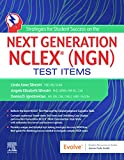
Saunders Q & A Review for the NCLEX-RN® Examination
This edition contains over 6,000 practice questions with each question containing a test-taking strategy and justifications for correct and incorrect answers to enhance review. Questions are organized according to the most recent NCLEX-RN test blueprint Client Needs and Integrated Processes. Questions are written at higher cognitive levels (applying, analyzing, synthesizing, evaluating, and creating) than those on the test itself.
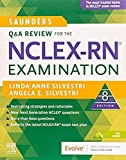
NCLEX-RN Prep Plus by Kaplan
The NCLEX-RN Prep Plus from Kaplan employs expert critical thinking techniques and targeted sample questions. This edition identifies seven types of NGN questions and explains in detail how to approach and answer each type. In addition, it provides 10 critical thinking pathways for analyzing exam questions.
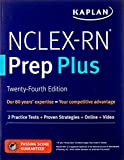
Illustrated Study Guide for the NCLEX-RN® Exam
The 10th edition of the Illustrated Study Guide for the NCLEX-RN Exam, 10th Edition. This study guide gives you a robust, visual, less-intimidating way to remember key facts. 2,500 review questions are now included on the Evolve companion website. 25 additional illustrations and mnemonics make the book more appealing than ever.
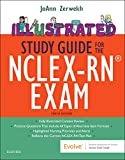
NCLEX RN Examination Prep Flashcards (2023 Edition)
NCLEX RN Exam Review FlashCards Study Guide with Practice Test Questions [Full-Color Cards] from Test Prep Books. These flashcards are ready for use, allowing you to begin studying immediately. Each flash card is color-coded for easy subject identification.
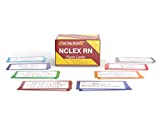
Recommended Links
An investment in knowledge pays the best interest. Keep up the pace and continue learning with these practice quizzes:
- Nursing Test Bank: Free Practice Questions UPDATED!
Our most comprehenisve and updated nursing test bank that includes over 3,500 practice questions covering a wide range of nursing topics that are absolutely free! - NCLEX Questions Nursing Test Bank and Review UPDATED!
Over 1,000+ comprehensive NCLEX practice questions covering different nursing topics. We’ve made a significant effort to provide you with the most challenging questions along with insightful rationales for each question to reinforce learning.

Hi there and thank you for these quizzes! They are awesome :) Just a note that on Pediatric quiz #1, questions 26 and 42 both count the answer as incorrect even if answered correctly! TIA
Corrected, Meg! Thank you for letting us know.
Hi! Just want you to recheck the Pedia Quiz #2 Question#20 it seems that you can’t click more than one answer when the question is about SATA thank you so much:)
Hello, this is corrected. Thanks for letting us know! :)
Exam 3. Question 2. A child with a poor nutritional status and weight loss is at risk for a negative nitrogen balance. To help diagnose this problem, the nurse in charge anticipates that the doctor will order which laboratory test?
Even though I selected C. and the answer is correct. It shows the answer as incorrect.
Hello, I have corrected this item. Thank you for letting us know!
Set #2 question 19, the correct answer is A but it highlights D
This is corrected Emily, thank you for letting us know!
Quiz 1 #27. Moro reflex should disappear at around 6 months and if it persist, it is an indication of a neurological abnormality. It should be absent when assessing a 9-month old infant.
I was thinking the same thing ! RA Student here :)
Thank you so much for your precious course,it helps me to progress,but please let true response following our response and not at the end of Quizz,it will be more helpful.
Quiz 2 #40 shows option B as the correct answer instead of option D.
Hi Ruth, question is asking for how many milligrams the patient will receive per dose not per day. Option B is correct.
Great job in this available site. I am grateful to find this source of study.
I am pediatrics nurse in Ethiopia and your material is very interesting for me and i would like to thanks you.
In quiz #4 question 19, the correct answer was labeled as option “C” (supine position to prevent headache). In spite of the fact that patients experience a severe headache after LP, both supine and prone positions are equally effective to minimize this effect. However, after the LP procedure, the child should assume the prone role for at least 2-3 hrs to avoid possible CSF leak and puncture site bleeding. Due to this reason, a supine position is not advised after the procedure.
Ahmed
Ahmed
I love pediatric nursing,I will like to get the question.